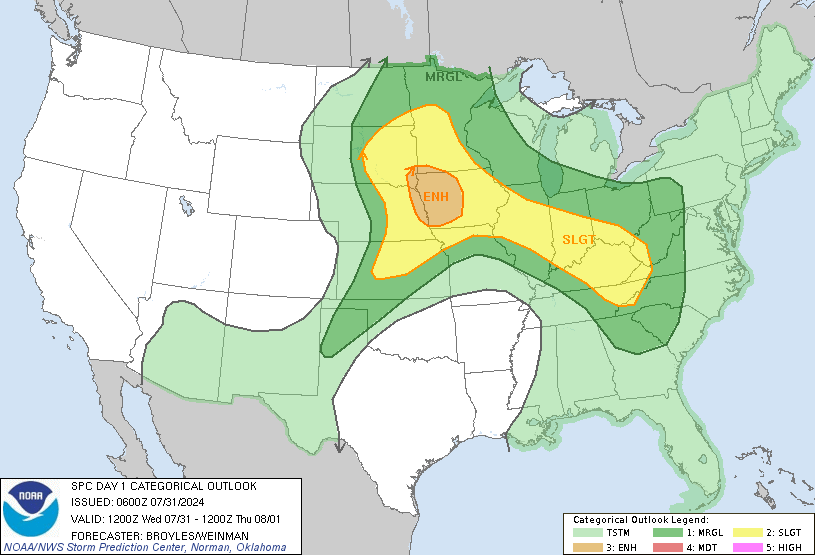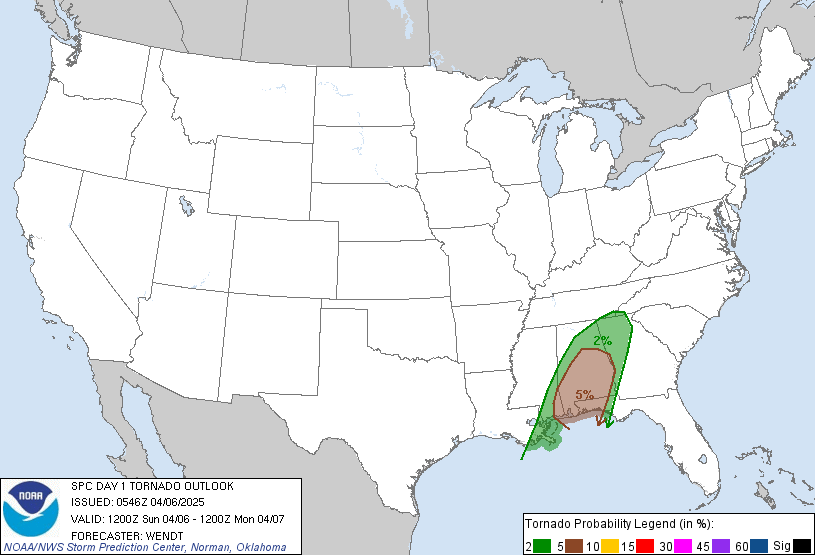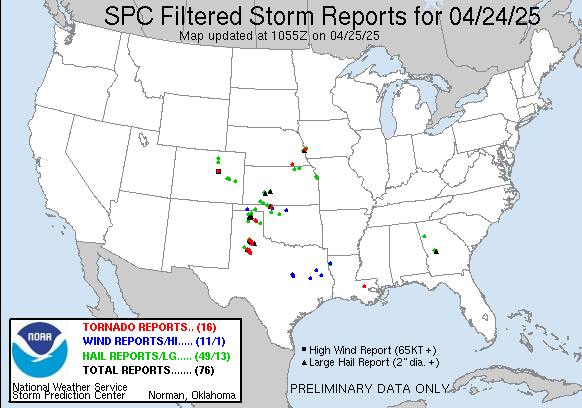It is difficult not to have a double-sided attitude towards social media nowadays. At its best, it is a fun and excellent source of information, the perfect way to quickly get crucial information, and to keep in touch with friends, acquaintances and like-minded all over the world. At its worst, social media can be used to easily spread lies and disinformation, miseducate people and cause dangerous trends. Social media allows for scientific information, propaganda, sound ideas, and idiotic behaviour blend together into an information mess that is difficult to filter – especially if you tap into a field that you know very little of.
In my personal life I am not very active on social media but I do use it a lot for storm chasing purposes under @stormchasingusa. I share posts and updates on Facebook, photos on Instagram, but my main social media channel is Twitter which I use to check news, see the most recent updates on storms, and share my own content: photos, videos, and updates from my own storm chasing.
Quite often I see tweets and posts with a video of some random guy (it’s almost always a man between 20-50 years old) with a tornado approaching his house that go out to film it, or the likes of it. Eventually, the tornado strikes the house (or close to it), the person who films finally runs to shelter and makes a narrow escape. These kind of video clips ARE spectacular and exciting as they get close shots of tornadoes and provides an interesting human impact angle. Tweets/posts with these kind of videos almost always come with a “disclaimer” such as: “This is why it is so important to take shelter when a tornado is approaching”. The video in the tweet below is an example. It is not the worst I have seen but somewhat average and explains what I mean.
Watch how Quickly this Escalated!!!
The DANAGERS of not NOT taking shelter during a TORANDO!Permission By: Ashton Currie
Download the @WeatherBug App Today! – Know BeforeApril 18, 2019 – Morton, Mississippi#MSwx #StormHour @StormHour pic.twitter.com/p7QdqhFDSW
— Live Storm Chasers (@Livestormchaser) May 13, 2019
In addition to these type of videos we have the videos of storm chasers taking extreme risks to get a close-up and exciting video of a tornado. The problem here is that we (yes, I am also to blame) are saying one thing but do another. What does a clip like the one above really teach any random Joe: Tornadoes are dangerous but not THAT dangerous, you will be perfectly fine staying out on your porch (or in this case by the window) filming it and then run into cover once it gets really windy. You get your adrenaline rushed scare, then you can take your amazing, close-call video, upload it and go viral.
Disclaimers will only protect yourself – not your followers
It really doesn’t matter what you write in the caption, 99% of the message is communicated in the video. It’s much like a father telling his child not to smoke, while smoking himself. “You shouldn’t be doing this, it’s a terrible, terrible habit” – but what does the kid do? How much will people remember from the tweet-message/disclaimer and how much from the video? The video itself might scare people to get into cover but it also kind of shows you it is fine not to go to cover. He survived (with bragging rights), right?
The problem we have is that social media acts like a perfect filter to extract videos like this. The videos that go viral are close calls, miraculous survivals, and close-up videos. Risky behaviour is highly rewarded no matter if you ended up in the situation by ignorance or because you are a thrill seeking and well experienced storm chaser.
The videos we don’t see in our feed
We see very few videos of people filming how they heed the warnings, take shelter in good time and film from the darkness of a shelter – because it is just not that exciting. Obviously, we don’t see the gory, snuff videos either when more unfortunate people gets shredded, impaled, or crushed by collapsing houses. The dark side of tornadoes are mostly just conveyed as numbers in newspapers of people dead and injured somewhere in a small town in some other state – or in movies as people getting killed by getting sucked up into tornadoes.
Death by tornado, however, is not a nice way to go. I am glad I don’t know this by experience as a first responder but only by stories re-told to me. It is n-a-s-t-y. Someone described being caught outside in a tornado as being tumble dried together with razor blades, concrete blocks, running grinding machines and compost bacteria at the same time. Then left stuck there for a long time waiting to get rescued. Nasty.
An infamous video of an old man, Clarence Schultz, filming an approaching tornado in Illinois 2015 that eventually killed his wife gained a lot of attention. Although being a spectacular video of a tornado, there is nothing cool or amazing about it. The video holds no glory at all and is one of the scariest tornado videos I have seen (especially knowing what it resulted in). It is difficult to watch the video without pure terror. Then again, it is pretty much a snuff video. Should that really be necessary to communicate the message of “Stop filming. Get to safety. Tornadoes ARE extremely dangerous!”?
Instead, what we often “learn” on social media is that a tornado is a scary and thrilling phenomenon but something that you can get close to and just like a super hero, you will always get out alive (albeit with some bruises and scars) and share your story. Or to put it this way: people are only killed by tornadoes in newspapers, not on YouTube.
What does your feed communicate to the world?
As storm chasers we love sharing videos of tornadoes, often from a safe distance but sometimes we get dangerously close to a tornado – sometimes on purpose and sometimes by accident. Full of adrenaline we upload the video of it and watch it go viral – or at least click share/retweet on others extreme videos. But what responsibility do we have when we share videos like this? What does our feed really tell our followers and the people they share it to?
We as storm chasers mostly know when a tornado is very dangerous and when we can safely get close. We also know what kind of situations that are dangerous even when they don’t appear all that dangerous and vice versa. When we share them that information is often lost, however.
What if the video you upload or share will end up in front of some clueless person who ends up dead because this is the most relevant source of information he has about tornadoes? “I remember seeing this video where a guy who stopped his car 50 yards in front of a tornado and he was perfectly safe.” – not understanding that your tornado was a stationary landspout EF-0 and “his” tornado is a satellite around an HP beast in Mississippi.
Although I don’t want to point out any particular storm chaser it is difficult to talk about this issue without mentioning the video from Reed Timmer in 2019 when he intercepted a tornado on foot. I am sure he knew to a great extent what he was doing and risking but what do we really learn from this? Will the Average Joe be able to discern Reed’s tornado from the tornado approaching him next time? The majority of the comments about Reed’s video was how bold Reed was to perform this stunt and I would be surprised if this would not create copycats who wants to share that kind of glory. Is Reed to blame if they do? No, not directly, but he does add fire to a dangerous trend – as does many of us.
TORNADO INTERCEPT in Dominator 3 with drones in the air!! Tornado intensified to the north then roped out @SeanSchofer @breakingweather @accuweather @skyforcex pic.twitter.com/TyUOtkTNRN
— Reed Timmer (@ReedTimmerAccu) May 18, 2019
Are we to blame for uploading and sharing – or should the viewer take full responsibility?
“It’s not up to me, I just share my experiences!”
“Darwin-selections! If you are that stupid then…”
“I did mention in the video that people should not do something like this!”
Well, should we care about what less knowledgable people learn from the content we share? Are we at all responsible? In my opinion, you (or perhaps your kids) are probably equally ignorant in other fields that might kill you when you think you know what you are doing based on information you gathered “somewhere”, i.e. social media. Areas such as handling electricity, wild animals, chemicals, vehicles, medicine – there are a lot of fields in which we are no experts and our common sense is based upon “information” we gather online.
Another question that would be interesting to know is “How many people who have died in tornado related events died because they were filming”? Obviously, we will never know because those videos are not (and should not be!) shared on social media. In addition, How many died because they did not respect the power of an approaching tornado because of what they learnt on social media? Obviously, we will never know this either but I am quite sure the number is not zero.
Are we, as storm chasers, contributing to a negative trend just by the act of chasing storms and sharing our stories online – with its content mix of beauty of danger? Are we the Steve Irwins of tornadoes, constantly talking about how dangerous it is what we are doing, justifying it with how well experienced we are, how our work has safety/research value etc so we can continue to do that exact thing – and share it online.
What can we do instead?
So, if this constitutes the problem, then what is the solution? What kind of video clips could we share to really teach people to do the right thing when a tornado approaches? Meteorologists, such as James Spann, are great at communicating this information to the public and a lot of clever people dive straight into cover when they hear their warnings.
What kind of video will both have a high impact and communicate the real dangers of a tornado? Think about what you can share on your social media channels that will not just make you look like a guy who cares for his fellow man but actually provides a high-impact message teaching the public what to do and not to do. How can you make a viral video that really teaches people to get into safety? What information will make hormone-filled teenager Brad head down to the basement instead of out on the streets when the tornado sirens go off? How can you convey a message that no photo/video is worth dying for? A video that will make everyone, once and for all, completely forget the idea of trying to take shelter under an overpass?
Have a look at the feed you share on Facebook, Twitter, Instagram and look at it from a perspective of: What kind of REAL message do you communicate about storms and tornadoes? Do your disclaimer, safety, and good practice posts get as much attention as the videos you share that communicates an opposite story? Have a look at it and see what your feed teaches the world. I promise I will do the same.
Photo: Our car while escaping a close call with a tornado in Leoti, KS, 2016 as captured by Weather Nation. The tornado was in fact very weak but it has also lead me to think about what the video (that was far from viral) would communicate to the public.





